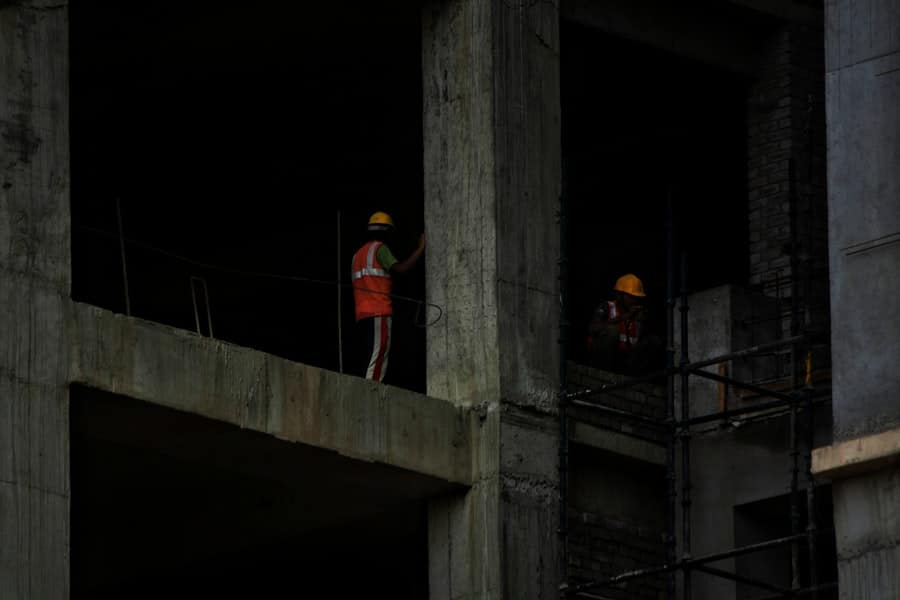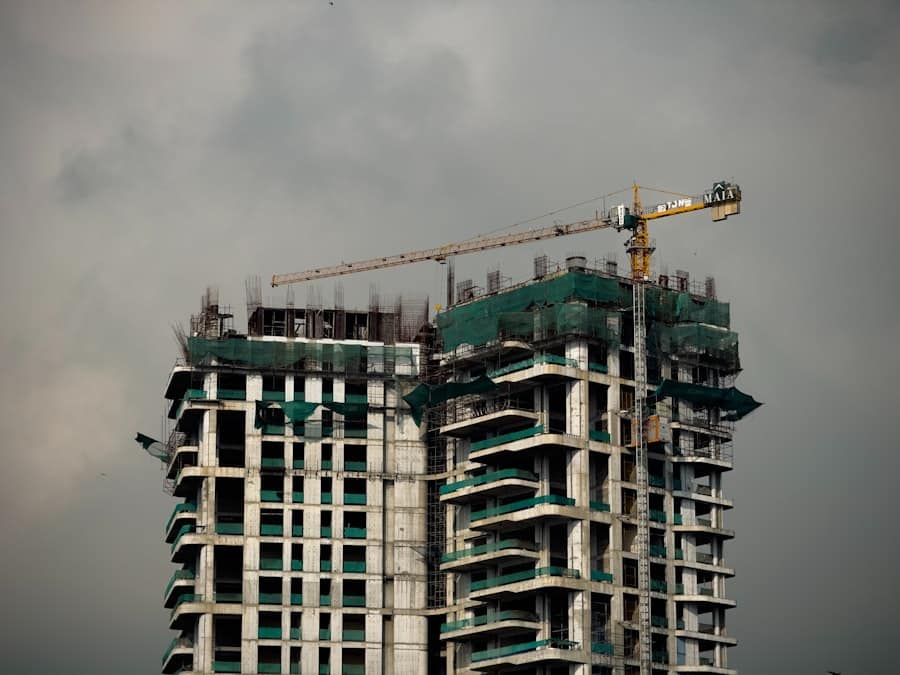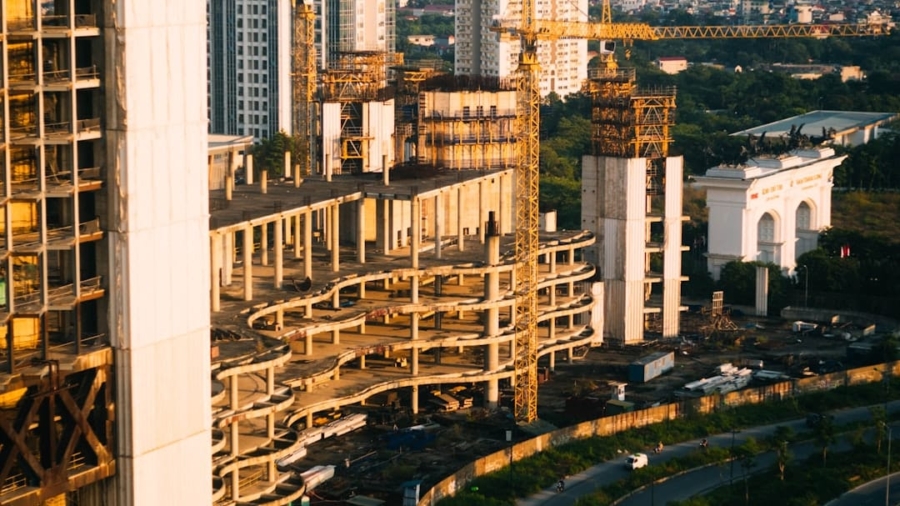Post-disaster infrastructure refers to the systems and structures that are either damaged or destroyed as a result of natural disasters, such as earthquakes, floods, hurricanes, and wildfires. The rebuilding of these infrastructures is a critical process that not only involves physical reconstruction but also encompasses the restoration of services essential for community functioning. This process is often complex and multifaceted, requiring careful planning, resource allocation, and community engagement.
The urgency of restoring infrastructure cannot be overstated, as it directly impacts the recovery of affected populations and the overall resilience of communities in the face of future disasters. The challenges associated with post-disaster infrastructure rebuilding are numerous. They include logistical hurdles, financial constraints, and the need for sustainable practices that can withstand future calamities.
Traditional methods of reconstruction often fall short in addressing these challenges effectively. As communities strive to recover, there is an increasing recognition of the need for innovative solutions that can enhance the efficiency and effectiveness of rebuilding efforts. In this context, artificial intelligence (AI) emerges as a transformative force, offering new methodologies and tools that can significantly improve the post-disaster infrastructure landscape.
Key Takeaways
- Post-disaster infrastructure rebuilding is crucial for the recovery and resilience of communities.
- AI can significantly impact rebuilding efforts by streamlining processes and improving efficiency.
- AI can be used for predictive analysis and risk assessment to better prepare for future disasters.
- AI applications in infrastructure monitoring and maintenance can help in early detection of potential issues.
- Implementing AI for efficient resource allocation can optimize the use of limited resources in rebuilding efforts.
The Impact of AI on Rebuilding Efforts
Artificial intelligence has begun to play a pivotal role in the rebuilding efforts following disasters. By leveraging vast amounts of data and advanced algorithms, AI can streamline various aspects of the reconstruction process.
This capability allows for a more rapid response, ensuring that resources are allocated where they are most needed. Moreover, AI can facilitate communication among stakeholders, including government agencies, non-profit organizations, and local communities, thereby fostering collaboration and enhancing the overall effectiveness of rebuilding initiatives. In addition to improving damage assessment, AI can also optimize project management during the reconstruction phase.
Machine learning algorithms can analyze historical data from previous disaster recovery efforts to predict potential delays and budget overruns. By identifying patterns and trends, AI can help project managers make informed decisions that minimize risks and enhance efficiency. Furthermore, AI-driven simulations can model various rebuilding scenarios, allowing planners to evaluate different strategies before implementation.
This proactive approach not only saves time and resources but also leads to more resilient infrastructure that can better withstand future disasters.
Using AI for Predictive Analysis and Risk Assessment

Predictive analysis is one of the most significant contributions of AI to post-disaster infrastructure rebuilding. By utilizing machine learning techniques, AI can analyze historical data related to natural disasters, including frequency, intensity, and impact on infrastructure. This analysis enables stakeholders to identify high-risk areas and prioritize them for intervention.
For example, cities prone to flooding can use AI models to predict which neighborhoods are most likely to be affected during heavy rainfall events. This foresight allows for preemptive measures to be taken, such as reinforcing drainage systems or implementing early warning systems. Risk assessment is another critical area where AI proves invaluable.
Traditional risk assessment methods often rely on static models that may not account for changing environmental conditions or urban development patterns. In contrast, AI can continuously update risk assessments based on real-time data inputs, such as weather forecasts and seismic activity reports.
For instance, after a major earthquake, AI systems can analyze ground movement data to assess structural integrity in real-time, guiding engineers on which buildings require immediate attention.
AI Applications in Infrastructure Monitoring and Maintenance
The role of AI extends beyond initial rebuilding efforts; it also encompasses ongoing monitoring and maintenance of infrastructure. Advanced sensors equipped with AI capabilities can be deployed across various structures—bridges, roads, dams—to continuously assess their condition. These sensors collect data on stress levels, vibrations, and other critical parameters that indicate structural health.
By employing machine learning algorithms to analyze this data, potential issues can be identified before they escalate into significant problems. For example, a bridge showing unusual vibration patterns may indicate structural fatigue that requires immediate inspection. Moreover, AI-driven predictive maintenance strategies can optimize resource allocation for repairs and upgrades.
Instead of relying on scheduled maintenance routines that may not align with actual wear and tear, AI systems can recommend maintenance actions based on real-time data analysis. This approach not only extends the lifespan of infrastructure but also reduces costs associated with unnecessary repairs or premature replacements. In a post-disaster context, where resources are often limited, such efficiencies are crucial for ensuring that communities can recover swiftly and sustainably.
Implementing AI for Efficient Resource Allocation
Resource allocation is a critical component of post-disaster recovery efforts. The effective distribution of limited resources—financial aid, construction materials, labor—can significantly influence the speed and success of rebuilding initiatives. AI can enhance resource allocation by analyzing various factors such as population density, damage severity, and logistical constraints to determine where resources will have the greatest impact.
For instance, during the aftermath of a hurricane, AI algorithms can process data from multiple sources to identify which areas are most in need of immediate assistance based on damage reports and population demographics. Furthermore, AI can facilitate real-time tracking of resource deployment through advanced logistics management systems. By integrating data from supply chains and transportation networks, AI can optimize delivery routes and schedules to ensure that materials reach their destinations promptly.
This capability is particularly vital in disaster scenarios where time is of the essence. For example, if a community requires emergency supplies such as food or medical aid following a disaster, AI systems can quickly analyze traffic patterns and road conditions to determine the fastest routes for delivery trucks.
AI’s Role in Designing Resilient Infrastructure

The design phase of infrastructure development is crucial for ensuring resilience against future disasters. AI technologies are increasingly being utilized to create innovative designs that incorporate adaptive features capable of withstanding extreme weather events or seismic activity. Generative design algorithms can explore thousands of design alternatives based on specified parameters such as material strength, cost constraints, and environmental impact.
This approach allows engineers and architects to identify optimal solutions that may not have been considered through traditional design processes. Moreover, AI can simulate various disaster scenarios during the design phase to evaluate how proposed structures will perform under different conditions. For instance, engineers can use AI-driven simulations to model the impact of a 100-year flood on a new bridge design or assess how an earthquake might affect a high-rise building’s stability.
These simulations provide valuable insights that inform design modifications aimed at enhancing resilience. By integrating AI into the design process, communities can build infrastructure that not only meets current needs but is also prepared for future challenges.
Ethical and Social Implications of AI in Rebuilding Post-Disaster Infrastructure
While the benefits of AI in post-disaster infrastructure rebuilding are substantial, there are also ethical and social implications that must be considered. One significant concern is the potential for bias in AI algorithms that could lead to inequitable resource distribution or decision-making processes. If historical data used to train these algorithms reflects systemic inequalities—such as underinvestment in certain neighborhoods—AI systems may inadvertently perpetuate these disparities in post-disaster recovery efforts.
It is essential for stakeholders to ensure that data used in AI models is representative and inclusive to avoid exacerbating existing social inequalities. Additionally, there are concerns regarding privacy and surveillance associated with the deployment of AI technologies in public spaces during recovery efforts. The use of drones for damage assessment or monitoring could raise questions about data collection practices and individual privacy rights.
Communities must engage in open dialogues about how data is collected, stored, and utilized to build trust among residents and ensure that their rights are respected throughout the rebuilding process.
The Future of AI in Building Resilient Infrastructure
As we look toward the future of post-disaster infrastructure rebuilding, it is clear that artificial intelligence will play an increasingly central role in shaping resilient communities. The integration of AI technologies into various aspects of reconstruction—from predictive analysis to resource allocation—offers unprecedented opportunities for enhancing efficiency and effectiveness in recovery efforts. However, it is equally important to address the ethical considerations surrounding these technologies to ensure equitable outcomes for all affected populations.
The ongoing evolution of AI will likely lead to even more sophisticated applications in infrastructure development and maintenance. As machine learning algorithms become more advanced and data sources expand, communities will be better equipped to anticipate challenges and respond proactively to disasters. Ultimately, the successful implementation of AI in post-disaster infrastructure rebuilding will depend on collaboration among stakeholders—governments, private sector entities, non-profits, and local communities—to create frameworks that prioritize resilience while addressing ethical concerns head-on.
In the wake of natural disasters, the role of AI in rebuilding infrastructure has become increasingly significant. AI technologies can streamline the reconstruction process, optimize resource allocation, and enhance the resilience of new structures. A related article that delves into the tools necessary for managing such complex projects is Best Software for Project Management. This article provides insights into various project management software options that can be instrumental in coordinating efforts and ensuring efficient communication among teams working on post-disaster infrastructure projects.
FAQs
What is the role of AI in rebuilding post-disaster infrastructure?
AI can play a crucial role in assessing damage, prioritizing repairs, and optimizing resource allocation in the aftermath of a disaster. It can also help in predicting future disasters and designing more resilient infrastructure.
How does AI help in assessing damage after a disaster?
AI can analyze satellite imagery, drone footage, and other data sources to quickly assess the extent of damage to infrastructure such as roads, bridges, and buildings. This allows for a more efficient and targeted response.
How can AI assist in prioritizing repairs after a disaster?
By analyzing data on population density, critical infrastructure, and other factors, AI can help prioritize which areas and structures need immediate attention, ensuring that resources are allocated where they are most needed.
What are the benefits of using AI in rebuilding post-disaster infrastructure?
AI can help speed up the assessment and repair process, reduce human error, and optimize resource allocation, ultimately leading to a more efficient and effective rebuilding effort.
Are there any challenges or limitations to using AI in post-disaster infrastructure rebuilding?
Challenges include the need for accurate and up-to-date data, potential biases in AI algorithms, and the requirement for skilled personnel to interpret and act on AI-generated insights. Additionally, there may be concerns about privacy and data security when using AI in disaster response.

